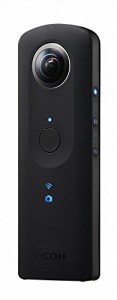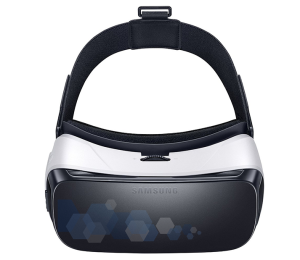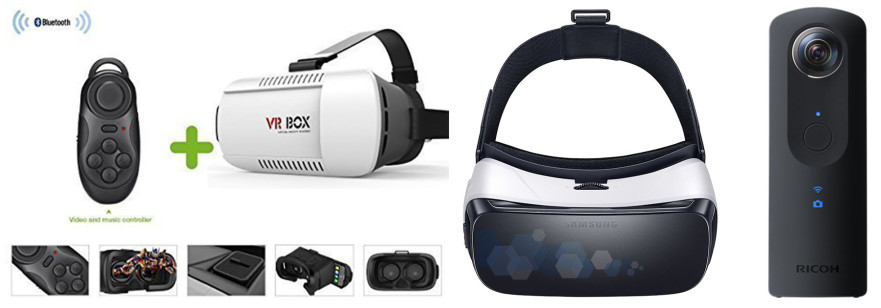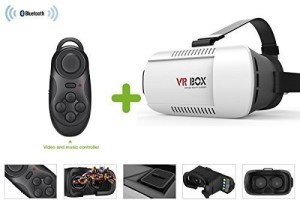Yesterday the final part of the 360 VR trio arrived, the part that’s needed to create my masterpiece… At least that’s what I am hoping. Queue the unwrapping, opening and examining. I thought about doing an “Unboxing” video of it all but there are so many already and let’s face it, taking an item out of the box is far less informative than actually seeing how it works.
First up was the VR Box
Compared to the original cardboard, it feels sturdy and solid, the phone will definitely not be falling out of these. In my excitement I grabbed the first phone available, an iPhone 6s+ will it fit? Perfect, the phone is in the cradle ready to be inserted so I fire up cardboard and close the tray with my phone inside.
Awesome I am staring at my cardboard but cannot control the phone. Every time I need to do something the phone needs to come out and my finger fires away at the screen. This is crazy, luckily I had the sense to buy a Bluetooth VR Controller. A quick pairing later and I’m off. Not off to watch anything on VR but OFF, this thing doesn’t work, its clunky, glitchy and rarely does what I want so the whole experience is starting to look very disjointed. I am going to have to get back to this device because removing the phone to navigate a VR menu is not very user friendly and definitely will not take off!
Using a Nexus 5 with the remote had very similar effects, there is some strange Chinese software you can download for this control but its not in the app store and certainly not going to be installed on anything I own especially since its all in Chinese and cannot be read.
By now my dreams of a seamless sit down and experience some VR is not looking great, not only is the viewing angle not very immersive but it is a frustrating experience. I am wondering where has the consumer side come on in the last few years, this is not what I experienced at CES Vegas, but then that was all setup and controlled for me. But for now that is enough Goggles for me.
Queue the Ricoh Theta S 360 Degree Digital Camera
 I open the box and there is not a lot there, the quick start guide explains the buttons which I did read because like the GoPro there is no screen. You need to know what the lights mean. Luckily they are pretty self explanatory and there is not much too it. Power, Shoot, Switch Wi-Fi On/Off and change from Photo to Video.
I open the box and there is not a lot there, the quick start guide explains the buttons which I did read because like the GoPro there is no screen. You need to know what the lights mean. Luckily they are pretty self explanatory and there is not much too it. Power, Shoot, Switch Wi-Fi On/Off and change from Photo to Video.
I hold the device like a normal camera and hit record, the red light illuminates and I am off running around the office. But which way is default forward, is it the camera facing me or away, who cares its 360 video just run around like a fool. Plugging it into the PC was quick and easy and I was able to download the video like a normal camera. Now I just need to upload to YouTube to test the results.
Sharing was like any other video upload but the 360 does not work? But a quick Google shows that there is a hidden attribute on the file that needs to be set before uploading.
YouTube have a piece of software that will do this for you but I am annoyed that its not set on the camera? It is after all a 360 camera recording 360 video, WHY would this not be set?
On the Ricoh website I see there is some software for this too, so at least there are options. When I say software it is a really basic app, Export video with the 360 flag set and update the firmware is about all you can do. Updating the firmware was quick and easy, plug, click, complete, just as it should be.
Uploading 360 Content
After finding out you need to set 360 flags on the video file I thought I would test both ways using the Ricoh and YouTube options. Both are simple processes, open the software set the flag and save the file, again… Once on YouTube the videos work as expected, although the quality is not great. I know it is 1080 cropped for 360 but this is like watching video from a 1980’s smartphone? Maybe the light was just too low but if this is the quality it will be heading right back to where it came from.
 By now my hopes and dreams of consumer ready devices able to create, share and consume VR and augmented reality are dwindling quickly. I open the Samsung Gear VR and like the other headset it is simply packed and pretty self explanatory. This device however will only accept a limited set of Samsung phones so its off to grab the Galaxy 6 Edge. I put the phone in and nothing? On closer examination I see there is a USB connector on the headset that you need to plug into, this is what is used for all the controls on the side and other sensors. As soon as you plug the phone in it sets off the Samsung App install procedure. Now a handy bit of advice, once the software is downloaded, unplug it from the headset, I spent 10 minutes balancing the phone in the headset trying to install, you don’t need to do this.
By now my hopes and dreams of consumer ready devices able to create, share and consume VR and augmented reality are dwindling quickly. I open the Samsung Gear VR and like the other headset it is simply packed and pretty self explanatory. This device however will only accept a limited set of Samsung phones so its off to grab the Galaxy 6 Edge. I put the phone in and nothing? On closer examination I see there is a USB connector on the headset that you need to plug into, this is what is used for all the controls on the side and other sensors. As soon as you plug the phone in it sets off the Samsung App install procedure. Now a handy bit of advice, once the software is downloaded, unplug it from the headset, I spent 10 minutes balancing the phone in the headset trying to install, you don’t need to do this.
Once everything is on I strap the headset on and HOLLY MOLLY this is not just better, it blows the other headset out the water. If I could see where I am I would grab the other headset and chuck it out immediately. But I’m in a Virtual room and I am not leaving…
There is a quick start guide, tutorials and I’m surfing, literally surfing in a wave on a surfboard looking down the tube WOW. Now I know that sentence and process is a bit incomplete but that’s kind of how it went. It was pretty self explanatory, idiot proof and just works like you assume it will. The only thing that worries me about this device is the delicate connecting up of the phone every time? How long until it breaks the USB port?
Overall my first few hours with all these toys was a complete mixed bag. But this is just the start, 2016 will see a huge rise in VR and Augmented reality. For the companies that wait until its flowing on your Facebook feed, it will be too late. You really need to start planning on how this technology will affect your future growth because it is not going away, its just going to grow.
GALLERY
Some shots from this morning on the way in to London
Playing with a 360 camera today. Ooooh toys. #theta360 #theta360uk – Spherical Image – RICOH THETA







